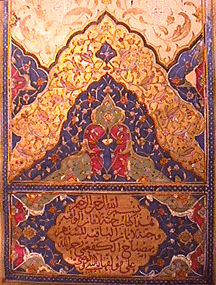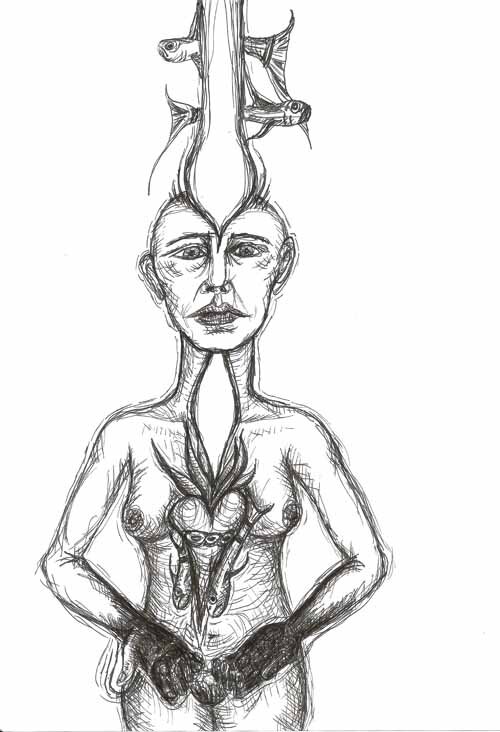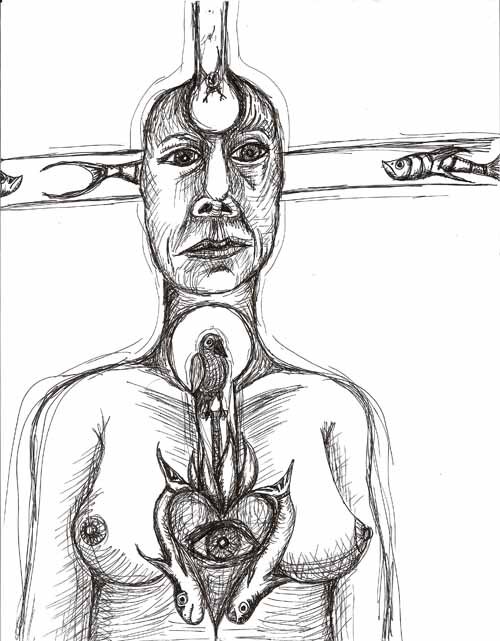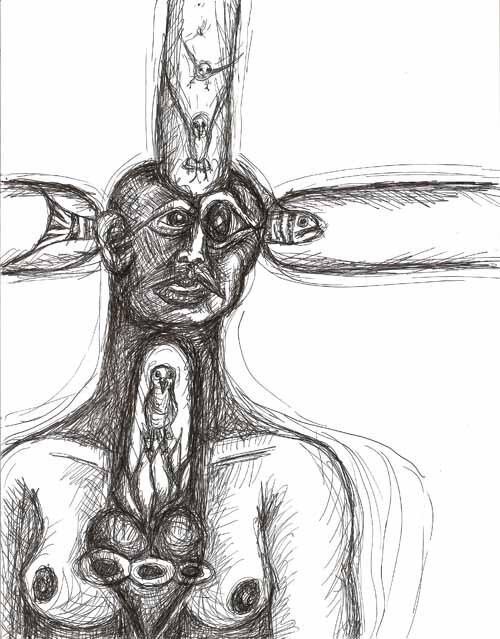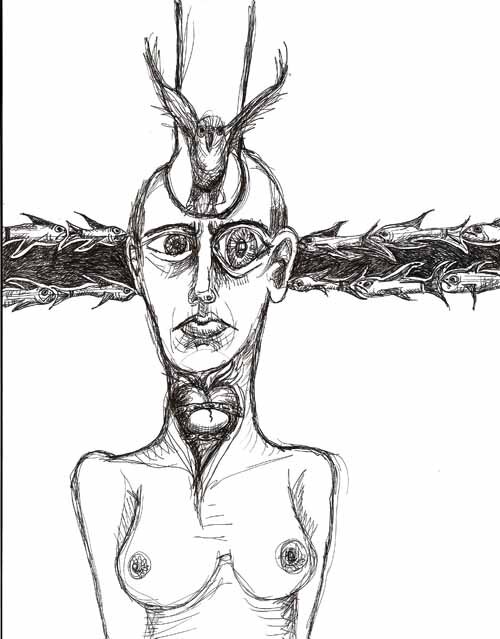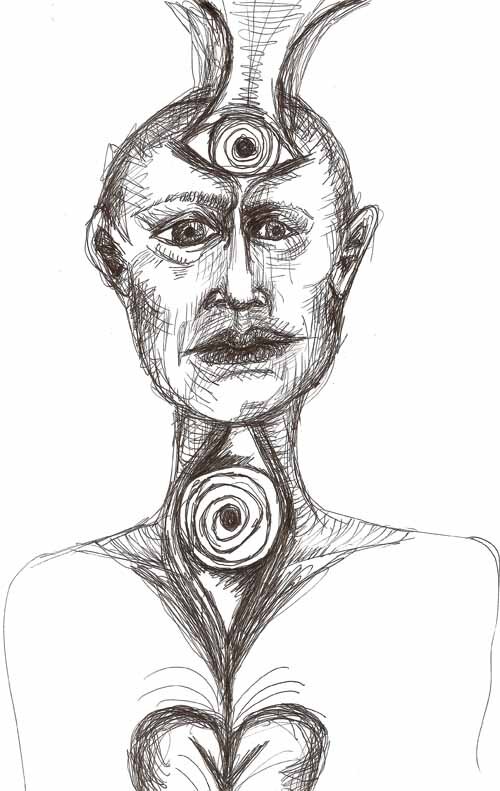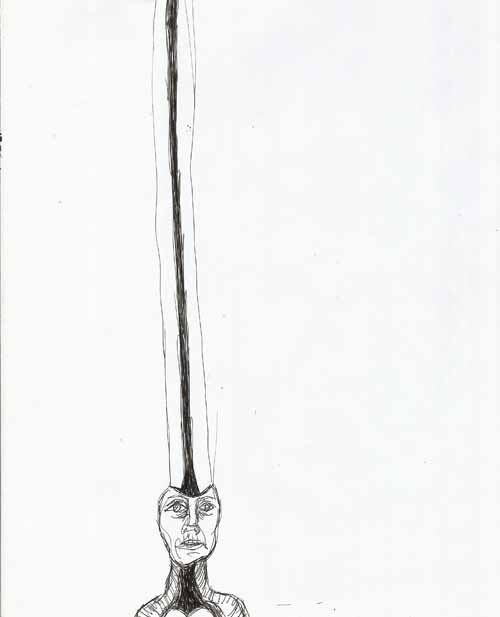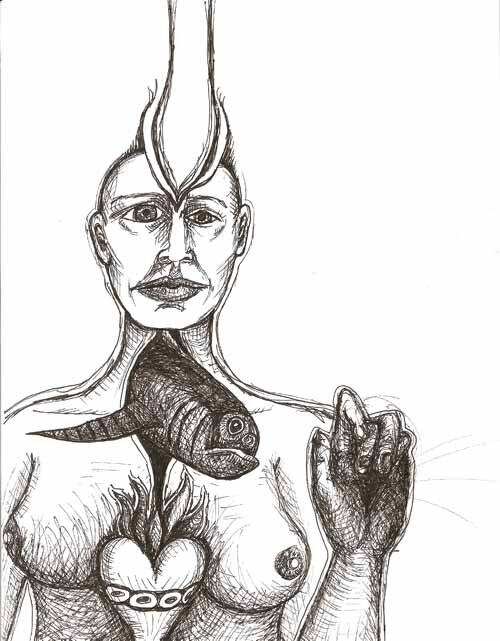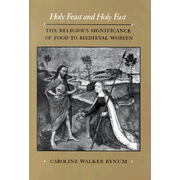I have been inspired by so many who have shared their own mystical experiences, Hildegard of Bingen, Alex Grey, Meinrad Craighead, & Gartenfische to name a few, to share my own. I share this experience because it has everything to do with why and how I make my art and live my life.In college, I had the good fortune to study in Florence. I was inundated, saturated with the energy of the Divine which is captured in those works of art & churches. I had never experienced such intensity before. I became particularly enamored of a Madonna & Child painting in a small shrine made in a former grain market, called Orsanmichele. The building was constructed around an open-air grain market where several healings had taken place which were attributed to the Virgin Mary. I visited this painting of Mary almost everyday for months and when I returned home I continued to pray to her.One day when I was visiting my family, I had pulled the binds down in my old room and lain down on the bed to pray. I was holding a Mary medal which I used to wear around my neck and facing my old bookcase. I prayed for a long time running my fingers across the medal's ridged surface when suddenly felt I was being watched. I opened my eyes and there was Mary’s head suspended over my stomach (my womb). I knew I was her without doubt. She was dark skinned and mysterious, the earth mother. I gasped and heard a loud pop. Mary disappeared and at the same moment I was filled utterly with a flash of blue light.
Annunciation, Etching by Sybil Archibald
When the flash passed, my eyes were swimming like they do when exposed to something too bright. I noticed floating in my field of vision, a short dark column. It was the same experience as staring into a light bulb and upon looking away seeing dark dots float before you. I thought it was strange, such a distinct shape. So I got up and went to where the light had seemed to come from & where the shape also seemed to be coming from in my old bookcase which I hadn’t really looked through in years. There, wedged between two larger books and pushed slightly back so it was out of sight was a small (about 4”x 2.5”) black leather New Testament with gilt edges. Its spine was the exact shape and size of the dark mark floating around in front of my eyes. I knew with complete certainty this was where Light had come from. I had had no religious training at all. The only time I had every opened this Bible was when my Dad gave it to me at least 10 years earlier. At that time, I had opened it randomly and read just St. Luke’s description of the Annunciation.It took me a long time to put together the fact that I had experience an annunciation of sorts although I only painted annunciation scenes for years after that. In my paintings, I always showed Mary as experiencing incredible fear. (See my early wood cut above. Sorry for the poor quality picture!) On the day I received the Light, the blue Light of creativity, I was given the job of being a vessel for this Light to enter into the world. This is a fearful task and I wasn’t up to it. I believe that is why I have been gifted with my illness, scleroderma- to prepare me for this sacred task. Having scleroderma has cleansed me of anger, bitterness & depression. Having scleroderma has taught me to be empty and surrender, although there is still much more to learn on that front! I pray to my Source everyday that I might be able to be a true vessel for the Light. Now my depictions of annunciations are no longer filled with fear.This blue Light within is like a baby, it needs to be nurtured and cared for, protected and fed. This is the job of artists. Perhaps some might think artists are selfish or self-centered. Really they have turned inward to nurture this Light so that it may be infused into the world.





 So I started & finished
So I started & finished 